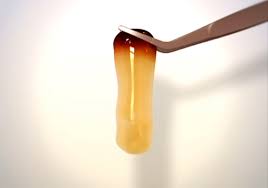This week we have the pleasure of learning from Dr. Nekky Jamal, on the basics of PRF and how to incorporate it in your daily practice. Dr. Nekky Jamal is a faculty member at the Bites Institute and a full time practitioner in Alberta, Canada.
PRF
What is it?
Platelet rich fibrin also known as PRF has gained popularity for use in surgical procedures to help heal the site more rapidly and effectively through it’s potential ability to stimulate regeneration of a variety of tissue types.

Procedural protocol
It is the patient’s own blood collected at the time of the procedure into a vacuum vial through negative pressure.
Samples must be immediately placed into a balanced centrifuge in order to avoid activation of coagulation cascade.
During the centrifuge process, thrombin transforms fibrinogen that is concentrated at the top of the vial into a fibrin network.
The platelet rich fibrin is then cut from the rest of the clot and flattened into the desired shape of the surgical site. PRF is completely autologous and with it’s fibrous structure full of cytokines and growth factors serves as the perfect fibrin scaffold for cell migration.
Platelet Rich Fibrin
PRF has gained a reputation for its simplicity. The preparation of it is also quite cost effective. Unlike PRP (platelet rich plasma), PRF does not require activation by means of bovine thrombin or other extrinsic anticoagulants. It’s fibrous structure lays the supportive scaffold or a matrix that is slowly remodeled over a 10 day period enabling the slow release of growth factors and retaining platelets and cytokines in the surgical site. PRP has shown to release majority of its growth factors within the first day.
PRF is a highly biocompatible matrix containing a reservoir of tissue growth factor and is said to enhance the recruitment and proliferation of a variety of cells, stimulating rapid regeneration of a wide variety of tissues in nature. Moreover, due to the increase in white blood cells and macrophages, the use of PRF offers some antibacterial defense in protecting the surgical site.
What does this mean for your practice?
- If bone is present around previously placed implants, PRF can helps in depositing healthy new bone around them. By attracting osteoblasts (bone-forming cells) to the area of concern as well as with the help of stem cells, PRF helps in bone regeneration.
- Thanks to leucocytes, PRF has antibacterial properties.
- Cytokines prevent inflammation, thus, speed up wound healing.
- PRF provides a sustained release of growth factors. Also, the growth factors in your blood help your bone heal better when they come in contact with PRF. Growth factors speed up the healing considerably.
- PRF facilitates angiogenesis (formation of new blood vessels) at the site of wound which contributes to healing.
- PRF also directs new cells such as epithelial cells (skin cells) to the area of wound so that fresh skin cells can cover the wound.
- Helps to heal the palatal wound after gingival graft.
- PRF also attracts other cells such as bone forming osteoblasts and blood vessel-forming cells, which are essential for regenerating healthy tissue. It also keeps undesirable cells away.
- PRF is self-degradable. It degrades within one to two weeks. By cross-linking the fibrin, we can delay the degradation by another two weeks. In a few cases, especially for implants, PRF reduces the healing time by half.
- PRF reduces osteitis (inflammation of bone) by up to 90%.
- PRF is a natural surgical additive, which carries low risks and provides good results. PRF is suitable to be used alone as well as in combination with other biomaterials.
Today’s Morning Huddle was brought to you by Dr. Nekky Jamal from the Bites Institute.



